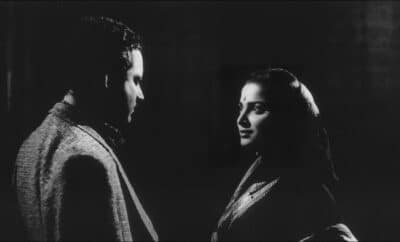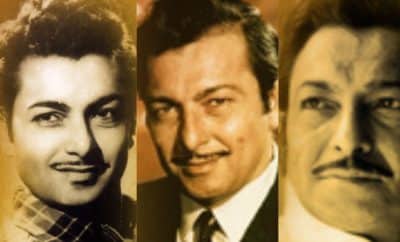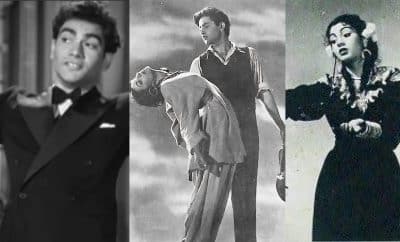Song Sketch
Caged Bird And The Traveller – Chalat Musafir Moh Liyo Re – Teesri Kasam
I know what the caged bird feels, alas!
When the sun is bright on the upland slopes
When the wind stirs soft through the springing grass,
And the river flows like a stream of glass;
When the first bird sings and the first bud opes,
And the faint perfume from its chalice steals
I know what the caged bird feels!
I know why the caged bird beats his wing
Till its blood is red on the cruel bars;
For he must fly back to his perch and cling
When he fain would be on the bough a-swing;
And a pain still throbs in the old, old scars
And they pulse again with a keener sting
I know why he beats his wing!
I know why the caged bird sings, ah me,
When his wing is bruised and his bosom sore
When he beats his bars and he would be free;
It is not a carol of joy or glee,
But a prayer that he sends from his heart’s deep core,
But a plea, that upward to Heaven he flings
I know why the caged bird sings!
The above lines are from the poem Sympathy by Paul Laurence Dunbar. The poem which also inspired the title of Maya Angelou’s autobiography – I Know Why The Caged Bird Sings!!
A sweet little bird is in the cage alone. No flying, no freedom, no voice of its own, no mingling with the other fellow birds around. It only can sing that too at the orders of its master. Having a nest of its own and seeing its own eggs hatch into beautiful birdlings is a distant dream. Yearning for freedom. It flutters and waves its wings in agony for someone to notice it rather than dancing and singing with joy. The poem is all about the freedom the bird pines for.
In India illegal pet trade or bird trade is prevalent despite the law and act. Trade in birds is most extensive as in numbers and values. Amongst all other birds, one of the most illegally traded bird is Munia. These small sized but beautiful birds are found in different parts of India. They are bright coloured and have a sweet voice which makes them the most sought after for caged birds (they increase the entertainment value/quotient). Thus remaining in the cage for years the Munia bird keeps entertaining and mesmerising her master or even the passers by with her sweet voice and her charming appearance. But what if she herself at one point is charmed or smitten by a rustic traveller? Shailendra has put this situation so simply and beautifully!!!
(Well, it also might be that that traveller is also smitten by her at the same time, but so are the other travellers!! So, I think Shailendra brings out the tale of Munia bird smitten by the traveller instead the other way round. Because if it is Shailendra there has to be something different about it)
Shailendra though has been inspired by Kabir bhajan which is popular amongst the rural folks of India. Muniya pinjre waali
Tera Satguru hai byapaari….
And here’s what Shailendra writes –
Chalat musafir moh liya re pinjde waali muniya
Chalat musafir moh liya re pinjde waali muniya
The caged bird, a Munia, is smitten by the simplicity of a passer by or a traveller!!!
What a lovely song penned by Kaviraj!! Beautifully woven rustic words and aptly set to tune in a folk genre by Shankar-Jaikishen. It can be termed as mild trace of Chaiti folk genre. Chaiti , the semi-classical or folk songs which come in the series of season songs, usually have lines ending with O Rama or Ho Rama. As the name suggests it typically sings the praises of Lord Rama or includes his name and is sung during the month of Chait which also marks Lord Rama’s birthday. It is a popular folklore from Bihar.
Teesri Kasam (1966) a melancholy film produced by Kaviraj Shailendra and directed by Basu Bhattacharya is all about the story of a caged Munia and the rustic, simple hearted traveller. Based on the award winning story Maare Gaye Gulfaam by Phanishwarnath Renu, the film encapsulates the bullock cart journey (30 hours journey) of Heerabai (Waheeda Rehman) a dancer with a theatre company and a rustic villager Heeraman (Raj Kapoor). The bond which blossoms between them is warm, melancholy, adorable but very delicate. And it is handled equally delicately on screen. Heerabai is drawn towards Heeraman for his simple ways, his philosophies, his art of singing and also his intensity. Waheeda Rehman and Raj Kapoor have literally lived their roles. See Raj Kapoor blushing every time and saying that typical iss and you fall in love with the mere simplicity just as Heerabai fell for him.
So this munia bird is a know all. She is more literate than the traveller, she has certainly travelled more than the traveller, she is not very chic and polished but certainly knows the ways of life. She is well acquainted with the society, the customs. She has seen, observed this society and its ways sitting there in the cage. Shailendra put forth this aspect in a different manner.
Ud ud baithi halvaiya dokaniya
Hey Rama
Ud ud baithi halvaiya dokaniya
Aare
Barfi ke sab ras le liya re
Pinjde waali munia
Ud ud baithi bajajva dokaniya
Aahaa
Ud ud baithi bajajvaa dokaniya
Aare
Kapda ke sab ras le liya re
Pinjde waali munia
Ud ud baithi panvadiya dokaniya
Hey Rama
Ud ud baithi panvadiya dokaniya
Aare
Beeda ke sab ras le liya re
Pinjde waali munia
These lyrics reflect the different types of people in the society which the munia bird has observed or come across with. She knows their secrets too. Halvaiya – the one who makes sweets, Bajajva – the one who makes cloth and Panvadiya – the one who makes Paan (preparation of betel leaf). 3 major sects of society in Bihar.
But the Munia bird, who has mesmerised and observed this entire society is herself mesmerised by the simplicity of the rustic traveller. She is smitten by him. What a beautiful thought!!
An amazing style of rendition adapted by the versatile Manna Dey. He brings in so much life into the song. His rich style of singing and pronunciations enhance the song and makes it full of ras. Mark his enthusiasm when he sings Hey Rama, O Rama. Shankar Jaikishen have made an apt utilisation of his voice along with the use of harmonium and dholak. The harmonium seems to be as restless as the Munia in the cage and the dholak is as simple, down to earth, rustic as the traveller!! Their musical story is punctuated, with soft use of chipli/cymbals throughout, in the background. Picturised on the villagers who form a troupe singing the folk numbers. While the munia bird watches it quietly from a distance. The song is lip synced by Krishna Dhawan while Raj Kapoor joins in the troupe a little later. So very natural and intrinsic.
The journey of this traveller and the Munia bird is about discovering each other, knowing each other. It also is the decorative, motif of parting their ways. Charming, bewitching, mesmerising – Lyrical, sensitive, adorable – Caged bird and the traveller!!!




Vikas Khandekar
September 10, 2019 at 12:38 am
Lovely song! Any idea who has played the harmonium in this? Is it Sonik ji, of Sonik-Omi duo? He has played harmonium in Nigahein Milaane ko ji chahta hai..
V.Ramachandran
March 16, 2021 at 11:36 pm
Thanks for making me to learn the meaning of this not-so-simple folk song. I do not know Hindi except for a working level comfort and this is helpful to learn
Deepa
March 18, 2021 at 2:47 pm
Thank you so much. Getting such a feedback is always encouraging 🙂
Amer
December 26, 2022 at 6:24 pm
Thanks a lot, Deepa for the detailed meaning. I was mesmerized by the song since childhood and always wondered that something I was missing to understand the lyrics. But no more now. Thank to you.
Siddhartha Tare.
February 21, 2023 at 5:20 am
At the age of 68, I came to know the meaning of this beautiful song. It has been mesmerising me all through out since my teen age till now.
How lucky I am to search it out.
Shri
September 18, 2023 at 2:10 pm
Thank you Deepa for sharing this. I always wondered about the context behind this song, and wasn’t sure if I would find anything meaningful about it. Appreciate you for taking the time to write such a beautiful explanation.
Saptarshi Bhattacharya
September 18, 2023 at 8:01 pm
Thank you for this wonderful explanation. Ever since childhood I was drawn towards the lyrics of this song, and I always had the feeling that is has some meaning and significance. And now I understand
Dipendra Sinha
February 3, 2025 at 10:21 am
Very well informed and intellectual explanation here. I have liked this song for over 50 years, now I know why I like it. Thanks.